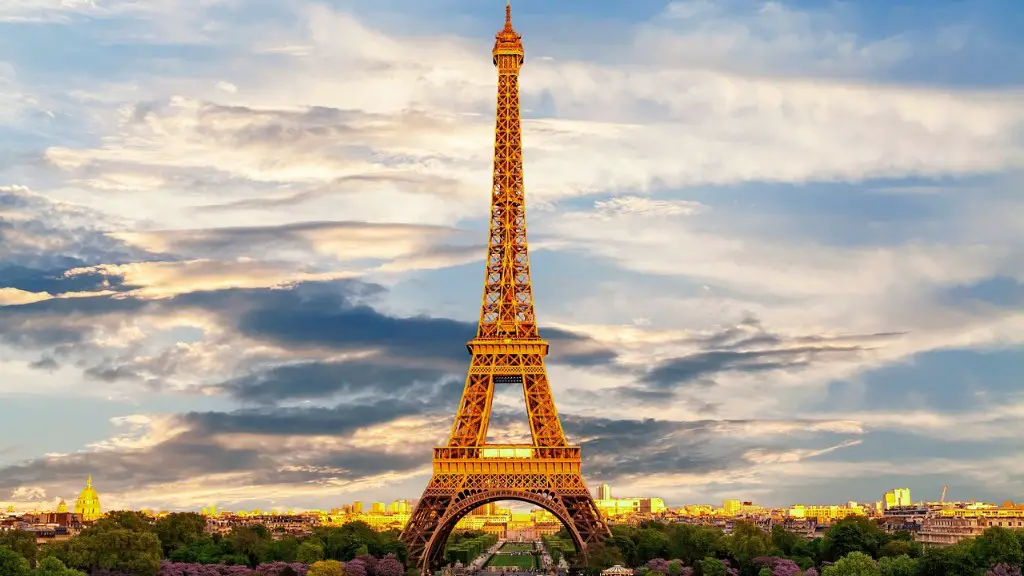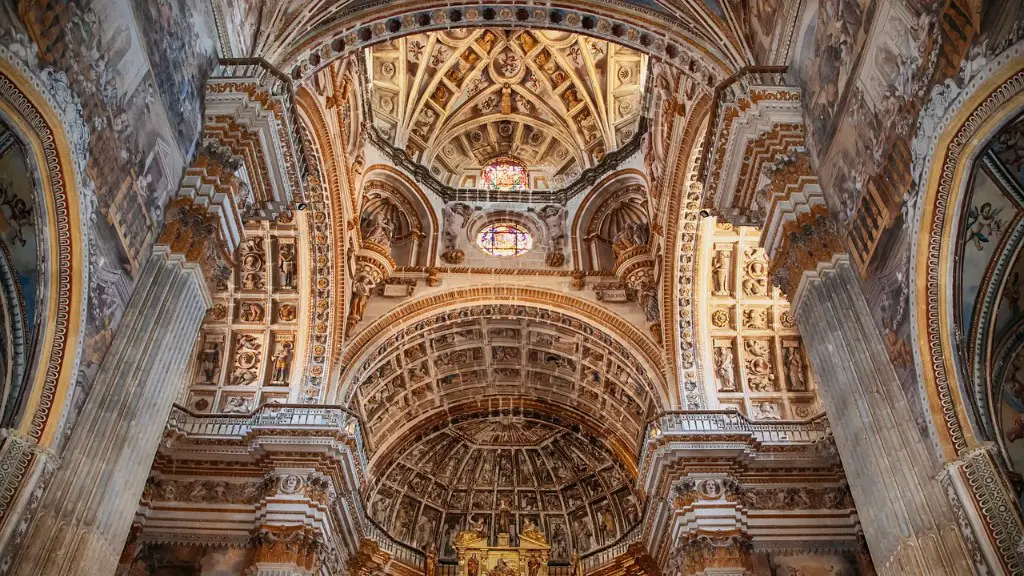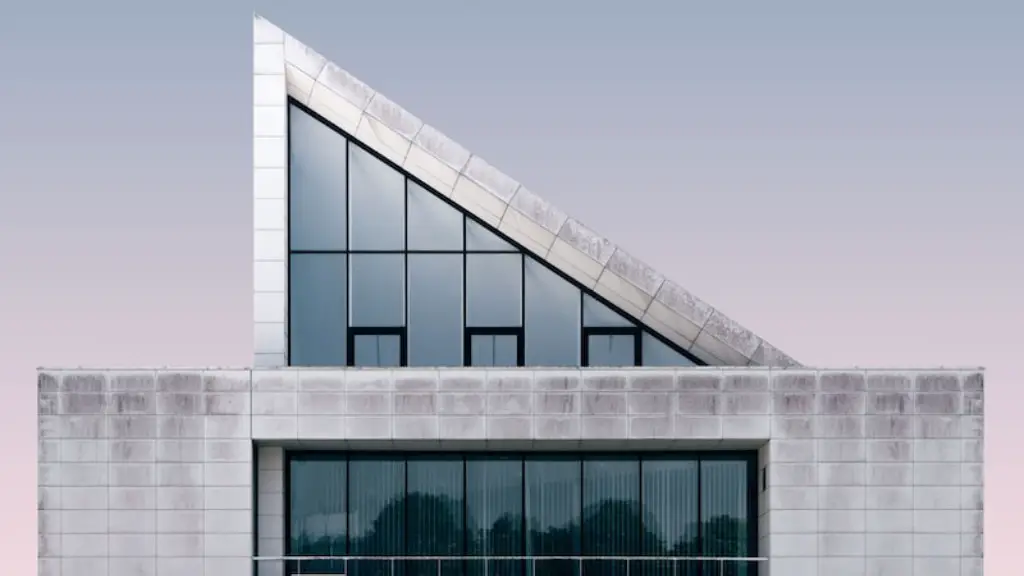What Impact Did Christianity Have On Art And Architecture
Christianity had a profound impact on the development of art and architecture in the ancient world, contributing significantly to the development of such principles as form, scale, perspective and composition.
Architects and artists drew on the stories, characters and teachings of the Christian faith to inspire their work. This was especially true in the Middle Ages, when Christianity was the dominant religion. At this time, religious art and architecture was an important part of everyday life and was used to provide stories and moral lessons to those in the community.
One of the most notable examples of Christian-inspired art and architecture is the Gothic style of architecture. Created in the 12th century, this style took its inspiration from religious structures such as churches, abbeys and cathedrals. The most distinguishing feature of Gothic architecture is its use of pointed arches and rib vaulting, which allowed for larger windows, higher ceilings and a lighter appearance than the Romanesque style that preceded it. The sheer size and beauty of the churches and cathedrals built in this style was meant to evoke a sense of awe and immensity that was meant to glorify God.
The Renaissance period, which began in Italy in the late 14th century, was characterized by a renewed interest in classical art and architecture. Although this period is often seen as a rejection of the medieval period, it was in fact still deeply influenced by Christianity. Many of the masterpieces of this period, such as Michelangelo’s Sistine Chapel ceiling and the sculptures of Donatello, were inspired by stories from the Bible.
In the 18th century, the Enlightenment brought about a shift in public opinion and art and architecture became more secular in nature. Nevertheless, Christianity still held a strong influence on art and architecture. Neoclassical architecture, for example, which was popular during the late 18th and early 19th centuries, was heavily influenced by religious structures such as monuments, churches and temples.
Today, Christianity’s influence on art and architecture can still be seen. Modernist and contemporary architects such as Le Corbusier, Frank Lloyd Wright and Tadao Ando have all created architecture that has been strongly shaped by religious principles. From their use of spatial form to the spiritual essence of their designs, these architects have continued to draw on the influence of the Christian faith.
The Meaning of Symbols in Paintings
Throughout the history of Christian art, symbols have played an important role in conveying a spiritual message. It was believed that the representation of physical objects such as animals, plants and objects could be used to refer to a spiritual truth or symbol. For example, a lamb often symbolized Jesus, while a cross was a symbol of his death and resurrection.
Symbols were used in religious works of art to evoke an emotional response from the viewer. For example, religious paintings would often include symbols such as the Virgin Mary or Jesus Christ in the foreground of a scene in order to evoke a sense of reverence and awe. By using symbols in this way, the artist was able to communicate a deeper spiritual message.
Symbols continue to play an important role in religious art today. Modern artists often use symbols as a way to explore complex themes and issues such as faith, morality and hope. By using symbols to signify something deeper than their physical appearance, these artists are able to express their emotions and ideas in a powerful way.
The Consequences of Iconoclasm
In the early 8th century, a period known as the Iconoclastic controversy began in the Byzantine Empire. This was a period in which religious figures and church leaders began to oppose the use of icons, or religious images, in churches and other places of worship.
This period of iconoclasm had far-reaching consequences for the development of art and architecture. In order to comply with the mandate, religious structures had to be redesigned and structures such as frescoes and mosaics had to be covered over or eliminated entirely.
The Iconoclastic controversy impacted art and architecture in other ways as well. In the years following the controversy, a new style of architecture emerged, known as the Byzantine style. This style of architecture was heavily influenced by Islamic architecture and featured domes, vaults, arches and richly decorated walls. This style of architecture was adopted by many of the churches and cathedrals constructed during this period.
The Iconoclastic controversy also led to a resurgence of interest in classical art and architecture. Artists and architects began to revisit and reinterpret the styles of the past in order to create new works of art and architecture. This period of renewed interest in classical art and architecture played an important role in the development of the Renaissance period.
The Use of Color in Christian Art
Color is an important element of religious art and has been used throughout the centuries to evoke a sense of spirituality and piousness. Colors such as blue, gold and white were often used to represent spiritual concepts and ideas, while brighter colors such as red and orange were used to create a sense of joy and celebration.
The use of color in Christian art also served an important symbolic purpose. Colors were used to represent different saints and aspects of the Christian faith. For example, red was often used to symbolize the passion and sacrifice of Christ, while blue was used to symbolize the Virgin Mary. By using color in this way, artists were able to convey complex spiritual themes and ideas.
Today, the use of color in Christian art continues to play an important role. Many modern religious works of art use color to evoke a sense of spiritual emotion and to create a sense of awe and reverence for the Christian faith.
The Merging of Christian and Pagan Beliefs
Throughout the centuries, Christianity has been shaped and influenced by the cultures and beliefs of other religions. This is particularly true in the area of art and architecture, where the influences of pagan beliefs can be seen in the works of many Christian artists.
For example, many Christian structures, such as churches and cathedrals, are often decorated with pagan symbols such as the dragon, the serpent and the raven. Likewise, many Christian works of art contain elements of pagan mythology, such as the story of Hercules or the legend of the Minotaur.
The blending of pagan and Christian beliefs has been a source of debate throughout the centuries. However, it is clear that the merging of these two faiths has been a major influence on the development of art and architecture throughout the ages.
The Role of the Church in Art and Architecture
The Church has long played an important role in the development of art and architecture. Throughout the centuries, the Church has commissioned and funded many of the most important works of art and architecture. This has included the construction of churches, cathedrals and other religious structures, as well as the commissioning of paintings, sculptures and other works of art.
The Church has also been instrumental in shaping the direction of artistic and architectural movements. During the Middle Ages, the Church was responsible for shaping the Gothic style of architecture, while during the Renaissance, the Church was a major patron of artists, commissioning many of the most renowned works of the period.
Today, the Church continues to have an important role in the development of art and architecture. Many contemporary architects, such as Tadao Ando, have designed churches, cathedrals and other religious structures, all of which are heavily influenced by the teachings of Christianity.
The Influence of Iconography on Art and Architecture
The term iconography refers to the study and interpretation of the symbols, figures and motifs used in the arts. Throughout the centuries, these symbols have been used to communicate religious and spiritual messages in works of art and architecture.
Many of the symbols and figures used in art and architecture were derived from the Bible and Christian theology. For example, the figure of the Virgin Mary is often used to represent the mercy of God, or the Holy Spirit is sometimes symbolized by a dove. By using these symbols, artists and architects were able to communicate complex spiritual messages in a powerful and meaningful way.
Today, the use of iconography in art and architecture continues to play an important role in expressing spiritual and religious messages. Contemporary artists and architects often draw on symbols from the past in order to express a spiritual truth or idea.
The Role of Patronage in the Development of Art and Architecture
Throughout the centuries, patronage has played an essential role in the development of art and architecture. Patrons, whether they be individuals, churches or institutions, commissioned and funded the creation of works of art and architecture. The patronage system also served as a means of ensuring quality by ensuring that works were completed to a high standard.
In the Middle Ages, the Church was a major patron of the arts, commissioning and funding the construction of churches, cathedrals and monasteries. Similarly, during the Renaissance, wealthy Italian families such as the Medicis provided patronage to many of the greatest painters, sculptors and architects of the period.
Today, patronage continues to play an important role in the development of art and architecture. In many countries, public institutions such as museums and galleries provide patronage for young and emerging artists, as well as established professionals.
The Role of Religion in Contemporary Art and Architecture
Religion continues to be a major influence on modern art and architecture. Many contemporary architects and artists draw on the teachings of Christianity in order to create spiritual and meaningful works of art.
One of the most noticeable examples of this is the use of icons and symbols in modern religious art and architecture. By using symbols from Christianity, artists and architects are able to evoke a sense of spiritual emotion and to communicate important spiritual messages.
Religion is also an important factor in the design of religious structures. Many churches and cathedrals are built according to certain religious principles and design elements. These design elements are often intended to evoke a sense of reverence and awe and to encourage spiritual contemplation.
In addition to religious structures, religion can also be seen in modern works of art. Many contemporary artists use religious symbols and motifs in order to explore complex themes such as morality, faith and hope.





